Oil painting is a fantastic medium and was the generally preferred choice for old master painters. Oil paint is slow drying and versatile, allowing you to easily manipulate it on the canvas.
I started out with acrylic paints but was quickly frustrated by the extremely fast drying times and the changing in colors as the acrylic paint dries. So I decided to make a transition into oil paints.
It was certainly a steep learning curve but I am extremely glad I made the transition.
Unfortunately, oil painting can seem very daunting to a beginner. Compared to acrylic painting, there are many rules you must follow to ensure the paint dries properly and you can easily get overwhelmed by all the procedures.
If you are interested in oil painting, then these oil painting tips should help you out. I note though these are just to get you started. You will need to conduct more research as oil painting is a very complex craft.
If you are a seasoned oil painter yourself and have some tips to add, please feel free to contribute in the comment section at the bottom.
- Tip 1: Paint Fat Over Lean
- Tip 2: Paint Thick Over Thin
- Tip 3: Prepare Your Canvas
- Tip 4: Try Painting With a Limited Palette
- Tip 5: Upsize Your Paint Brush
- Tip 6: Your Palette Knife Is Not Just for Mixing Colors
- Tip 7: Learn Global Techniques You Can Use in All Your Paintings
- Tip 8: Incorporate Scraping
- Tip 9: Careful With Blending
- Additional Readings
- Thanks for Reading!
Tip 1: Paint Fat Over Lean
This is probably the most important rule of oil painting, especially if you are painting wet on wet (a technique where you do not let the paint dry in between layers).
Fat paint refers to how much oil is present. By adding an oil medium to your paint, you are making it fatter. By adding a solvent to your oil paint, you are breaking down the oil and making it leaner.
The fatter the paint, the slower it dries.
The reason for painting fat over thin is that the layers on top must dry slower than the layers on the bottom of your canvas. If not, the paint will crack as it dries.
A simple way of tackling this is to have a process for painting. Start with very lean paint (paint plus solvent). Then add layers that are slightly fatter (paint plus a mix of solvent and oil medium). Every subsequent layer should be fatter than the prior (more oil medium / less solvent).
Tip 2: Paint Thick Over Thin
This is a similar principle to the fat over lean rule, in that it is based on the drying time of oil paint. Thick oil paint dries slower than thin.
So in theory, your first layers should be very thin, almost glazes of paint. Then as you build up your painting you will be increasing the amount of substance and oil.
Tip 3: Prepare Your Canvas
Preparing your canvas is a commonly overlooked but very important step. What does it actually mean?
Firstly, you must make sure your canvas has sufficient gesso coating. This is generally the case for most pre-primed canvas you buy from art stores.
Next, you should consider laying down a muted background color for your canvas. I like to use raw umber. This achieves the following:
- It gives you more of a middle ground to work with on your canvas rather than a glaringly white canvas. Painting straight onto a white canvas could warp your sense of value.
- It avoids any bare white parts of your canvas being exposed.
- It is an easy way to just start your painting and stops you from procrastinating, waiting for the perfect time to strike the canvas.
Now that you have a colored background layer down on your canvas, you should consider placing a sketch for your composition.
The sketch does not have to be all da Vinci. All it needs to do is set out the major shapes in your composition.
The purpose of the sketch is to merely guide you around the canvas. A sketch is also particularly useful if you are dealing with any perspective lines in your painting (i.e. a cityscape).
Tip 4: Try Painting With a Limited Palette
More colors do not mean a more sophisticated painting. If anything, it is often the opposite.
In your next painting, try limiting your palette to the bare essentials of blue, yellow, red (the primaries), and white. By mixing the three primary colors you get a natural black. Add some white to that and you have gray. The three primary colors can then be used to mix whatever color you need.
Using a limited palette will help focus your painting and create harmony. The more colors, the more difficult it becomes to balance your painting and control the chaos.

Anders Zorn was known to use a very limited palette of Yellow Ochre, Cadmium Red Medium, Ivory Black plus White. This is often referred to as the Zorn palette.
The Ivory Black was used by Anders Zorn as a very dark blue and the Cadmium Red and Yellow Ochre made up all three of the primary colors. With the addition of white, he was able to create a broad range of colors but retain harmony across his paintings.
Tip 5: Upsize Your Paint Brush
A simple way of improving your painting technique is to take the largest brush you are comfortable using, and up-sizing it. Try using this brush for as long as you can before downsizing to smaller brushes.
A large brush has such influence on your painting and forces you to be decisive and efficient with your strokes. You will also be able to cover the canvas much quicker.
You can read more about artist paint brushes here.
Tip 6: Your Palette Knife Is Not Just for Mixing Colors
Palette knives are not only useful for mixing colors on your palette. They can be a fantastic painting tool used for applying paint in an impasto style or for scraping paint off your canvas.
You can also use palette knives to put paint on the canvas without any blending, which you would get from using a brush.
There are some artists who have left paintbrushes behind entirely in favor of palette knives.

Richard Schmid skillfully uses the palette knife to create crisp strokes of color as shown by these flowers. You can read more about using the palette knife for painting here.
Tip 7: Learn Global Techniques You Can Use in All Your Paintings
Instead of spending all your time learning how to paint a specific beach scene or type of tree or cloud formation, invest in learning global techniques which you can use in all your paintings.
Great painters have mastered a handful of techniques that they use over and over again in all their paintings. Learning how to paint a highly specific scene will teach you exactly that, but nothing more.
Tip 8: Incorporate Scraping
Instead of adding more paint to create objects in your painting, try scraping paint off your canvas. This is a great technique for adding texture, detailing trees, or even just signing your painting.
You can use the blunt end of your paintbrush or palette knife.

Pro Hart was a famous Australian painter who used scraping in many of his paintings, usually to depict the harsh and sketchy Australian environment.
Tip 9: Careful With Blending
Blending is a common technique used in oil painting to create a refined and smoothed appearance. It is particularly useful for pushing objects back in perspective by softening the edges into the background (i.e. distant mountains which blend into the sky).
With that being said, it is one of the most overused techniques in oil painting. This is likely due to those painters trying to create a realistic finish as they view the painting from close. But you should not be painting for people to view up close. You want them to see the painting from a reasonable distance.
Your brush strokes should be visible up close, but as you step back from your painting, there will be optical blending and those strokes will no longer be clearly visible.
Additional Readings
Oil Painting – The Ultimate Guide For Beginners
9 Oil Painting Techniques For Beginners
How To Clean Your Oil Paint Brushes
Oil Paint Drying Time And How You Can Manipulate It
Thanks for Reading!
I appreciate you taking the time to read this post and I hope you found it helpful. Feel free to share it with friends. If you ever want to learn more, check out my Painting Academy course.
Happy painting!
Dan Scott

Draw Paint Academy

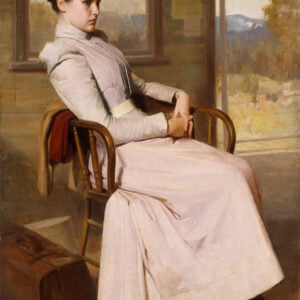
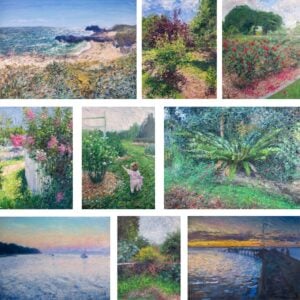

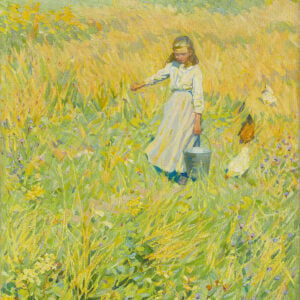
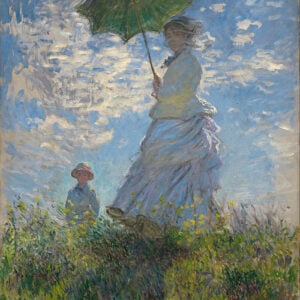
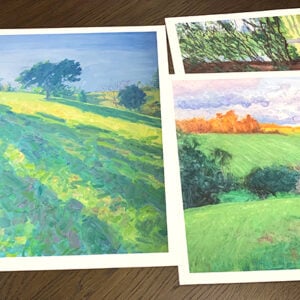
very very good
Fantastic advice thanks
No problem Tanya!
Can you recommend a sturdy easel and some quality brushes for oil painting?
Hi Sayanti. I will email you separately regarding this. Dan
Nobody has explained fat over lean to me, you have now I know how to start. I didn’t want to take formal lessons in case they influenced me I don’t have a style but have done a bit of Chinese water colours in the past.
Thanks
Maureen
Glad to help Maureen. It is certainly a tricky concept to get your head around.
Happy painting!
Dan
generally beginners start with copying their favourite painting, and later develop their own method. Is it okay to start with copying other paintings? can you please tip on this?
Hi Shobhana
Doing studies of historical paintings is perfectly fine and a great way to practice. However if you are just starting out then copying the master paintings may be a bit daunting. You could end up getting discouraged as the difficulty level of those paintings is very high.
What I prefer to do is study the great historical paintings in great detail. I will try and learn how they went about a painting, what processes they used, what colors they used and any other techniques. I will then try and use what I have learned in my own paintings. I feel this way I am still creating something original but with the guidance of the old masters.
I hope this helps.
Regards
Dan Scott
What’s the difference between traditional oil paints and alkyd oils or water-miscible oils?
Hi there. The main difference is the drying time. Alkyd and water-mixable oils can be completely dry within 24 hours. This is not the case for traditional oil paints.
I note however my answer is limited in that I have only ever used traditional oil paints. Why change what works?
Thanks
Dan Scott
Dan,
these are very interesting tips.
Thank you very much.
Artur from Poland
No problem at all Artur!
Dan
Thank you for inspiring me to get started! Your tips were very helpful to me.
It`s very beautifull tips!!! I also make a painting, maby you can see it here http://paintingsforlove.com/ and say what you think about it
Thanks Kistochka. Beautiful paintings!
Dan, I want to transfer a sketch to a canvas using transfer paper, and then paint using wet on wet technique. I am wondering if I use a workable fixative first, can I then apply my medium and oil paint to do my painting?
Hi Mike,
I am sure there is some kind of fixative which you could paint over, however I have not used any. You would need to be careful that any fixative does not impact the binding of the oil paint.
I would actually transfer the sketch then just paint over it without the fixative.
Kind regards
Dan
I was always wondering if I need to paint in a separate room when using oil paints? I heard they have quite a strong smell and need a long time to dry and since ma apartment is very small I wouldn’t want to live in paint smell for days.
What would you suggest?
When working with a realistic painting that has oil paint that is already dry, is there a technique to apply and blend the fresh paint. Does the dried paint need a thin coating of oil? Or medium? If so, what would you suggest using?
Toning your canvas should not be a hard and fast rule. Some of the greatest painters, including most of the Impressionists., painted on a white canvas; the reason being the “light” of the white canvas comes through the paint layers.
it will help me so much! thank you.